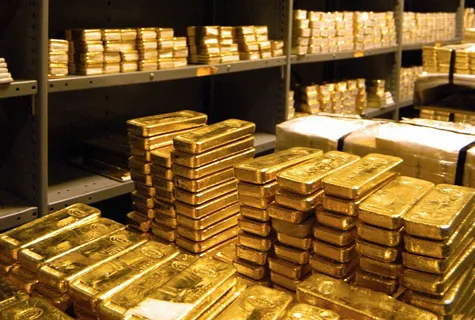The current 24k gold price has surged to a new high, causing ripples in the market. As the price of 24k gold skyrockets, investors and consumers alike are taking notice of the unprecedented increase. This surge in the price of 24k gold has left many wondering about the factors driving this sharp rise and the potential implications for the global economy. In this article, we will explore the reasons behind the surge in 24k gold price and its impact on the market.
The surge in the price of gold is attributed to various factors such as economic uncertainty, inflation concerns, and geopolitical tensions. Investors often turn to gold as a safe-haven asset during times of instability. The current price surge is attracting attention from investors and analysts alike as they closely monitor the precious metal’s performance in the market. This increase in gold price is significant and could have far-reaching implications for the broader economy.
Understanding the Fluctuations of 24k Gold Price

Understanding the fluctuations of 24k gold price involves monitoring various factors such as geopolitical events, economic data, inflation rates, and currency movements. These factors can impact the supply and demand of gold, leading to price fluctuations. Additionally, investor sentiment, central bank policies, and overall market conditions can also contribute to the volatility of gold prices. It is essential for investors and traders to stay informed and conduct thorough analysis to make informed decisions when trading or investing in 24k gold.
The Impact of 24k Gold Price on the Economy
See also: gold detector metal detector

The impact of the 24k gold price on the economy is significant due to the widespread use of gold in various industries and as a store of value. When the price of gold increases, it can lead to inflationary pressures as the cost of goods and services produced with gold as a component rises. This can have a direct impact on consumer spending and overall economic growth.
Additionally, higher gold prices can affect the jewelry industry, as well as the mining and exploration sectors. Increased gold prices may lead to higher production costs, impacting the profitability of gold mining companies and potentially leading to job losses in the sector.
Furthermore, gold is often seen as a safe-haven asset, with investors flocking to gold during times of economic uncertainty. As a result, fluctuating gold prices can influence investment decisions and market sentiment, impacting overall financial markets and global economic stability.
Overall, the price of 24k gold has a far-reaching impact on the economy, influencing various sectors and serving as an indicator of economic health and market sentiment.
Predicting the Future of 24k Gold Price

Predicting the future of 24k gold price involves analyzing a variety of economic, geopolitical, and market factors. Some of the key variables to consider include interest rates, inflation, currency strength, central bank policies, global demand for gold as a safe-haven investment, and geopolitical tensions. Forecasting gold prices also requires tracking the performance of other assets such as stocks, bonds, and commodities, as well as monitoring supply and demand dynamics within the gold market. Additionally, technical analysis of price charts and market sentiment indicators can be used to identify potential trends in gold prices. While it is impossible to predict with certainty how gold prices will evolve, conducting thorough research and staying informed about relevant developments can help investors make more informed decisions.
The Importance of Investing in 24k Gold

Investing in 24k gold is important for several reasons. Gold has been valued as a precious metal for centuries and has consistently maintained its worth, making it a reliable asset to invest in. It also acts as a hedge against inflation and economic uncertainties, providing stability to an investment portfolio. Additionally, gold can be easily bought and sold around the world, offering liquidity to investors. Overall, investing in 24k gold can be a valuable addition to a well-diversified investment strategy.
The Global Demand for 24k Gold
The global demand for 24k gold is driven by various factors including its use in jewelry, investment, and as a hedge against inflation. Gold has been a symbol of wealth and luxury for centuries and continues to be highly sought after in many cultures around the world. In addition to its aesthetic appeal, gold is also valued for its scarcity and durability, making it a popular choice for investors looking to diversify their portfolios. With the increasing popularity of gold as an investment, the global demand for 24k gold is expected to remain strong in the coming years.
How to Track 24k Gold Price Trends
To track 24k gold price trends, you can use financial news websites, commodities market websites, or financial apps that provide real-time updates on gold prices. You can also monitor gold price charts and historical data to analyze trends over time. Additionally, following industry experts and analysts on social media or subscribing to their newsletters can provide valuable insights into gold price movements. Another option is to consult with a professional financial advisor who can help track gold price trends and provide personalized investment recommendations.
The Role of Geopolitics in 24k Gold Price
Geopolitics can have a significant impact on the price of 24k gold due to its status as a safe-haven asset. When there is political instability, conflict, or economic uncertainty in major gold-producing or consuming regions, it can lead to increased demand for gold as investors seek to protect their wealth. This heightened demand can drive up the price of 24k gold.
Additionally, geopolitical events can also affect the value of a nation’s currency, which in turn can impact the price of gold. For example, if a major gold-producing country experiences political turmoil that weakens its currency, the price of gold in that country may rise as it becomes more expensive for local buyers.
Furthermore, trade tensions, sanctions, and geopolitical alliances can also have ripple effects on the supply and demand dynamics of gold, further influencing its price. Overall, the role of geopolitics in the 24k gold price is complex and multifaceted, making it a crucial factor for investors to consider when analyzing gold market trends.
Comparing 24k Gold Price to Other Precious Metals
Comparing 24k Gold Price to Other Precious Metals:
When comparing 24k gold prices to other precious metals, it’s important to consider factors such as rarity, demand, and industrial use. Gold is often seen as a safe haven investment and has been used for centuries as a store of value. Its limited supply and high demand contribute to its high price.
On the other hand, other precious metals such as silver, platinum, and palladium also have their own unique characteristics that can affect their prices. Silver, for example, is widely used in industry, which can impact its price compared to gold. Platinum and palladium are both used in the automotive industry, particularly in catalytic converters, which can also influence their prices.
Overall, the prices of these precious metals are determined by a variety of factors, and understanding their individual qualities and market dynamics is key to making informed investment decisions.
The Influence of Inflation on 24k Gold Price
The price of 24k gold is often influenced by inflation. Inflation generally leads to a decrease in the value of the currency, causing investors to turn to gold as a more stable asset. This increased demand for gold can drive its price higher. In times of high inflation, gold is often seen as a hedge against the declining value of currency, making it a popular investment choice for those looking to protect their wealth. As a result, the price of 24k gold tends to rise during periods of inflation.
The History of 24k Gold Price Movements
The price of 24k gold has experienced significant fluctuations throughout history. Gold has been used as a form of currency and a store of value for thousands of years, and its price has been influenced by various factors such as economic stability, inflation, and geopolitical events.
In the 20th century, the price of gold was fixed by governments and central banks as part of the Bretton Woods system. However, in the early 1970s, the United States abandoned the gold standard, leading to a period of increased volatility in gold prices.
In recent years, the price of gold has been influenced by factors such as changes in interest rates, currency fluctuations, and demand from emerging markets. The price of gold reached a peak in 2011, following the global financial crisis, and has continued to fluctuate since then.
Investors often turn to gold as a safe haven during times of economic uncertainty, which can lead to increased demand and higher prices. However, the price of gold can also be influenced by changes in mining production, technological advancements, and shifts in consumer preferences.
Overall, the history of 24k gold price movements demonstrates the metal’s enduring value and its ability to serve as a hedge against economic instability.
In conclusion, the current 24k gold price has surged to a new high, reaching levels not seen in recent years. This increase in value reflects the growing demand for gold as a safe-haven investment during times of economic uncertainty. Investors and collectors alike are closely monitoring the 24k gold price as it continues to make headlines in the financial markets.
See also
https://www.aucoffre.com/cours-or
https://www.bullionbypost.fr/cours-de-lor/cours-de-lor-aujourdhui/
https://or.bullionvault.fr/Cours-De-L-Or.do